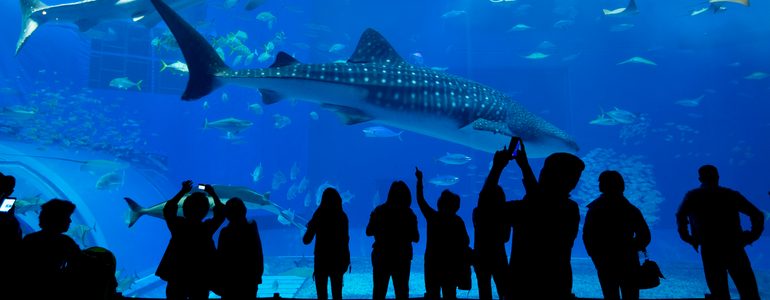Increasing Environmental Connection, Literacy and Engagement through an Art + Science Collaborative Education Practice
Project Update
November 2023
Over the past few months the Art + Science group have been working on logistics, program content scaffolding, and cohort parameters to maximize the experience for our students. We’ve met monthly to plan content and build community learning about the working expertise of our team members. Working together we have identified core content for the intertidal ecology portion of learning and will use this to correlate content to the most relatable DXARTS tools. It is imperative that we reinforce a sense of belonging and welcome lived- experience learning into the content, so we are learning accessible pedagogy tactics from our community partners. Moving forward we will work to finalize content and delivery techniques before moving into creating assessment tools and cohort solicitation.
Awarded Project Overview
April 2023
Climate change is a critical issue affecting everyone, but not all students have the same opportunities to learn about it or explore its impact on their surroundings. This project tackles that challenge by turning the intertidal zone—the vibrant area where land meets ocean—into a living classroom. By blending art and science, the initiative aims to make environmental education more engaging, relatable, and accessible, especially for middle and early high school students from underserved communities.
At its core, this project is about empowering students to see themselves as part of the solution. By connecting their everyday experiences to the science of local ecosystems, the program creates a learning environment where science feels personal and actionable. This is especially important for communities of color, who often face the greatest impacts of climate change but have fewer chances to engage with outdoor education.
Goals
- Use art and science to teach students about intertidal ecosystems and their role in climate change.
- Build a welcoming and inclusive space that prioritizes the voices and experiences of marginalized students.
- Develop a teaching model that other educators can adapt to bring environmental science to life in their classrooms.
- Encourage creativity and interdisciplinary thinking by merging art and science.
- Help students feel more connected to and invested in their local environments.
Approach
This project brings together educators, scientists, and artists to design a unique curriculum that blends art and science. Students participate in a hands-on internship program, learning about intertidal ecosystems, climate change, and how art can communicate complex ideas. The program includes classroom sessions, creative art projects, and a field trip to a nearby intertidal zone, where students can see the concepts they’ve learned in action.
Research Focus
- Testing how well art can help students understand and remember complex ecological concepts.
- Studying the impact of hands-on, place-based learning on students’ connection to their environment.
- Identifying and addressing barriers that prevent marginalized students from accessing outdoor education.
- Measuring how combining art and science improves student engagement and learning outcomes.
- Creating and refining teaching strategies that are inclusive and culturally relevant.
Why It Matters
Communities of color, especially those with fewer resources, are hit hardest by climate change, yet many ocean education programs focus on students who already have access to financial and outdoor resources. For many, spending time in nature isn’t easy — whether because of cost, lack of access, or safety concerns. This creates a cycle where some communities are left out of learning about and connecting with the natural world.
By putting students’ lived experiences at the center, this program creates a safe, supportive space where they can explore how climate change affects their lives and communities. With a focus on the intertidal zone (i.e., the area between their neighborhoods and the ocean), the program makes learning relatable and relevant. Students will discover how everything in this ecosystem is connected, from the kelp forests that shelter young fish to the mussels struggling to adapt to changing conditions. It’s not just about the problems; it’s about learning how these ecosystems work and what we can do to protect them.
Activities
- Designing and teaching a curriculum that combines art and science to explore intertidal ecosystems.
- Organizing a field trip to a local intertidal zone for hands-on learning and exploration.
- Guiding students as they create art projects that explain ecological concepts.
- Hosting a final event where students present their projects to peers, educators, and community members.
- Creating easy-to-use teaching toolkits so educators can replicate this model in their own classrooms.
Expected Outcomes
- Students gain a deeper understanding of environmental science and feel more connected to their local ecosystems.
- A teaching model that blends art and science, making environmental education more engaging and accessible.
- A collection of student-created art projects that communicate intertidal ecology concepts to a wider audience.
- Teaching toolkits, including classroom guides and trip planning resources, for educators across the country.
- Stronger relationships between students, their communities, and the natural world.
Sharing the Results
- Teaching toolkits will be made available through partners, Black in Marine Science (BIMS) and Sea Potential.
- Student art projects and their stories will be showcased in a public presentation and possibly online.
- Research findings will be published in educational and scientific journals.
- Workshops and presentations will be offered to educators interested in using this approach in their classrooms.
Research Team:
Principal Investigator: Steven Roberts, UW Seattle, College of the Environment, Aquatic & Fishery Science
Community Lead: Tiara Moore, CEO, Black in Marine Science
Student: Chris Mantegna, UW Seattle, College of the Environment, Aquatic & Fishery Science
Collaborators: Tivon Rice, UW Seattle College of Arts & Sciences, Digital Arts & Experimental Media
Symone Barkley, Black in Marine Science
Rosalind Echols, UW Seattle College of the Environment, Aquatic & Fishery Science
Savannah Smith, Sea Potential
Ebony Welborn, Sea Potential
Ángel Quimbita, Sea Potential
Althea Rao, PhD (UW graduate 8/2025)
Umut Gunduz, DXARTS PhD student
